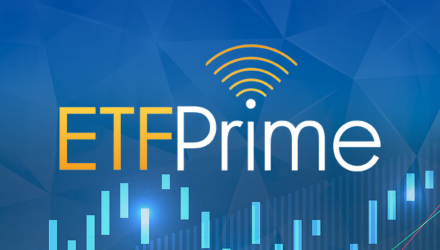On this week’s episode of ETF Prime, host Nate Geraci is joined by ETF Trends’ CIO and director of research, Dave Nadig, to discuss the state of financial markets and ETFs.
Geraci also speaks with Shana Sissel, Strategic Wealth Partners’ chief market strategist, regarding her perspective on the current market environment and how she incorporates ETFs into her investment strategies. Finally, Geraci speaks with Bob Minter, abrdn’s director of investment strategy, who discusses the company’s lineup of commodity and precious metal ETFs.
Standout moments in the ETF industry from 2021 include the launch of the ProShares Bitcoin Strategy ETF (BITO), an ETF that offers exposure to bitcoin futures. Nadig sees it as a foundational launch for the crypto space, akin to the first active fund launching, or the first fixed income funds. Another noteworthy move within ETFs was the conversion by Dimensional Fund Advisors of their mutual funds to ETFs.
“At the end of the day, I think the story of the year just simply has to be the flows,” Nadig says. “We’re going to close the year with over $800 billion in flows.”
ETFs have performed remarkably well, despite volatility, in a year that started with the retail investor movement into GameStop and which is ending with several bitcoin futures ETFs. Geraci notes the over 500 new ETFs launched this year, covering all aspects of the market. However, the majority of the flows have been into low-cost beta funds, with the core products continuing to grow and experience the most flows.
Looking forward, Nadig believes next year will be a big year for active management across the board and that direct indexing/SMAs will really fill out more to be an offering for everyone.
“This is not a case where this is the ETF killer that usurps the whole industry; this is a tool that’s going to really help advisors create absolutely unimpeachable relationships with their very best clients, and all the issuers are going to jockey to be the provider,” Nadig says of SMAs.
Inflation and the Role of Commodities and Metals
Shana Sissel, chief market strategist for Strategic Wealth Partners, discussedsher firm’s use of ETFs for clients as a complement that offers exposure to equities or to markets that they don’t believe themselves to be experts in. Sissel recently moved to Strategic Wealth Partners to help the firm build out more into the alternatives space.
When considering ETFs, she explains that Strategic Wealth takes a broad approach to ETF investing: “Because our usage of ETFs is really to complement our equity portfolios, it’s about liquidity, availability, and the broad spectrum of the exposure.” Fees are also a consideration when investing in ETFs for Strategic Wealth.
Looking forward, Sissel anticipates inflation lasting due to a confluence of inflationary pressures driven by the pandemic that are only being exacerbated by the Omicron variant’s emergence onto the global scene. It’s impacting spaces like fixed income because of the uncertainty, and it’s an area that Sissel sees as an opportunity for alternatives.
Bob Minter, director of investment strategy for abrdn, is Nate’s final guest and discusses the firm’s eight-ETF lineup, including funds for commodities and precious metals. Commodities have done really well this year, and Minter discusses the basics of the abrdn Bloomberg All Commodity Strategy K-1 Free ETF (BCI) and the abrdn Bloomberg All Commodity Longer Dated Strategy K-1 Free ETF (BCD), both of which offer broader commodity exposure and are up at least 25% YTD.
Minter explains that the launch of the abrdn Bloomberg Industrial Metals Strategy K-1 Free ETF (BCIM) was a direct response to the infrastructure bill passing because it contains metals commonly used for every element of electricity.
“Rather than focus on rare earths which can be engineered out of the battery technology, these are really fundamental building blocks of the energy transition,” Minter says.
Speaking to the underperformance of gold this year, Minter believes that it’s primarily due to competition from cryptocurrencies and India and China importing less gold between last year and this one.
Listen to the Entire ETF Prime Episode Featuring Dave Nadig:
For more ETF Prime podcast episodes, visit our ETF Prime channel.

